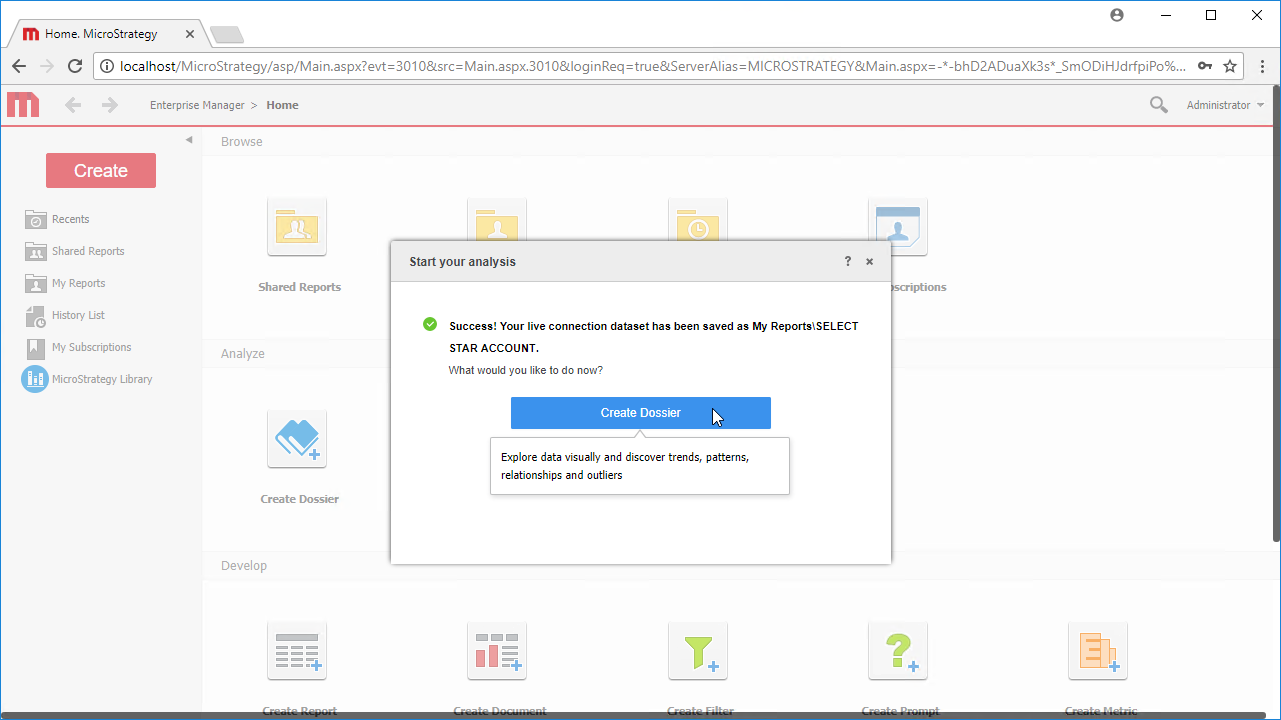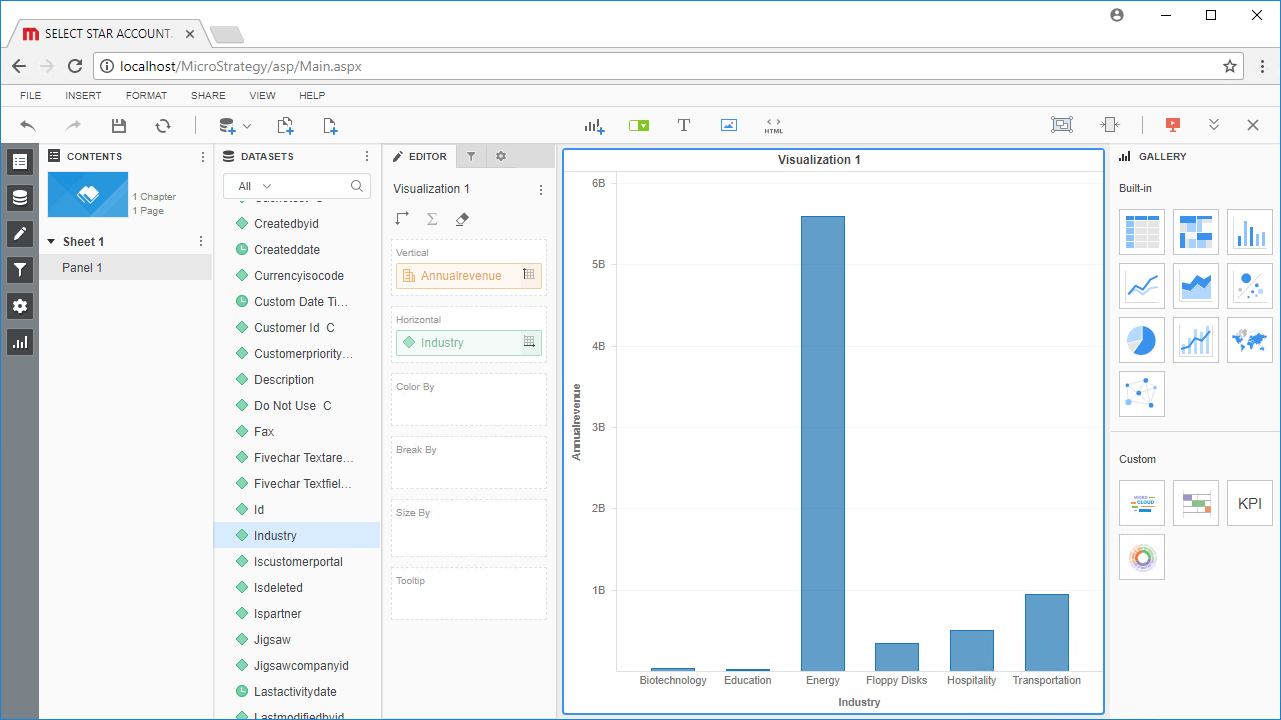Discover how a bimodal integration strategy can address the major data management challenges facing your organization today.
Get the Report →Use the CData JDBC Driver for Paylocity in MicroStrategy Web
Connect to Paylocity data in MicroStrategy Web using the CData JDBC Driver for Paylocity.
MicroStrategy is an analytics and mobility platform that enables data-driven innovation. When you pair MicroStrategy with the CData JDBC Driver for Paylocity, you gain database-like access to live Paylocity data from MicroStrategy, expanding your reporting and analytics capabilities. In this article, we walk through adding Paylocity as an external data source in MicroStrategy Web and creating a simple visualization of Paylocity data.
The CData JDBC driver offers unmatched performance for interacting with live Paylocity data in MicroStrategy due to optimized data processing built into the driver. When you issue complex SQL queries from MicroStrategy to Paylocity, the driver pushes supported SQL operations, like filters and aggregations, directly to Paylocity and utilizes the embedded SQL engine to process unsupported operations (often SQL functions and JOIN operations) client-side. With built-in dynamic metadata querying, you can visualize and analyze Paylocity data using native MicroStrategy data types.
Connect to and Visualize Paylocity Data using MicroStrategy Web
You can connect to Paylocity in MicroStrategy Web by adding a data source based on the CData JDBC Driver for Paylocity.* Before you begin, you will need install the JDBC Driver for Paylocity on the machine hosting the MicroStrategy Intelligence Server that your instance of MicroStrategy Web is connected to. Once you have created a data source you can build dynamic visualizations of Paylocity data in MicroStrategy Web.
- Open MicroStrategy Web and select your project.
- Click Add External Data, select Databases, and use Select Tables as the Import Option.
![Adding External Data]()
- In the Import from Tables wizard, click to add a new Data Source.
- Select Generic in the Database menu and select Generic DBMS in the Version menu.
- Click the link to show the connection string and opt to edit the connection string. In the Driver menu, select MicroStrategy Cassandra ODBC Driver (MicroStrategy requires a certified driver to interface through JDBC, the actual driver will not be used).
- Set the connection string to the following:
JDBC;MSTR_JDBC_JAR_FOLDER=PATH\TO\JAR\;DRIVER=cdata.jdbc.paylocity.PaylocityDriver;URL={jdbc:paylocity:OAuthClientID=YourClientId;OAuthClientSecret=YourClientSecret;RSAPublicKey=YourRSAPubKey;Key=YourKey;IV=YourIV;};![Configure the data source.]()
Set the following to establish a connection to Paylocity:
- RSAPublicKey: Set this to the RSA Key associated with your Paylocity, if the RSA Encryption is enabled in the Paylocity account.
This property is required for executing Insert and Update statements, and it is not required if the feature is disabled.
- UseSandbox: Set to true if you are using sandbox account.
- CustomFieldsCategory: Set this to the Customfields category. This is required when IncludeCustomFields is set to true. The default value for this property is PayrollAndHR.
- Key: The AES symmetric key(base 64 encoded) encrypted with the Paylocity Public Key. It is the key used to encrypt the content.
Paylocity will decrypt the AES key using RSA decryption.
It is an optional property if the IV value not provided, The driver will generate a key internally. - IV: The AES IV (base 64 encoded) used when encrypting the content. It is an optional property if the Key value not provided, The driver will generate an IV internally.
Connect Using OAuth Authentication
You must use OAuth to authenticate with Paylocity. OAuth requires the authenticating user to interact with Paylocity using the browser. For more information, refer to the OAuth section in the Help documentation.
The Pay Entry API
The Pay Entry API is completely separate from the rest of the Paylocity API. It uses a separate Client ID and Secret, and must be explicitly requested from Paylocity for access to be granted for an account. The Pay Entry API allows you to automatically submit payroll information for individual employees, and little else. Due to the extremely limited nature of what is offered by the Pay Entry API, we have elected not to give it a separate schema, but it may be enabled via the UsePayEntryAPI connection property.
Please be aware that when setting UsePayEntryAPI to true, you may only use the CreatePayEntryImportBatch & MergePayEntryImportBatchgtable stored procedures, the InputTimeEntry table, and the OAuth stored procedures. Attempts to use other features of the product will result in an error. You must also store your OAuthAccessToken separately, which often means setting a different OAuthSettingsLocation when using this connection property.
Built-in Connection String Designer
For assistance in constructing the JDBC URL, use the connection string designer built into the Paylocity JDBC Driver. Either double-click the JAR file or execute the jar file from the command-line.
java -jar cdata.jdbc.paylocity.jarFill in the connection properties and copy the connection string to the clipboard.
![Using the built-in connection string designer to generate a JDBC URL (Salesforce is shown.)]()
When you configure the JDBC URL, you may also want to set the Max Rows connection property. This will limit the number of rows returned, which is especially helpful for improving performance when designing reports and visualizations.
- RSAPublicKey: Set this to the RSA Key associated with your Paylocity, if the RSA Encryption is enabled in the Paylocity account.
- Right-click on the new data source, and choose Edit catalog options.
![Edit the catalog options.]()
- Edit the SQL Statement to SELECT * FROM SYS_SCHEMAS to read the metadata from the JDBC Driver.
![Configuring the Catalog Options.]()
- Select the new data source to view the available tables. You may need to manually click the search icon in the Available Tables section to see the tables.
- Drag tables into the pane to import them.
![Select tables to import.]() Note: Since we create a live connection, we can import whole tables and utilize the filtering and aggregation features native to the MicroStrategy products to customize our datasets.
Note: Since we create a live connection, we can import whole tables and utilize the filtering and aggregation features native to the MicroStrategy products to customize our datasets. - Click Finish, choose to the option to connect live, save the query, and choose the option to create a new dossier. Live connections are possible and effective, thanks to high-performance data processing native to CData JDBC drivers.
![Save the query and create a new dossier.]()
- Choose a visualization, choose fields to display and apply any filters to create a new visualization of Paylocity data. Data types are discovered automatically through dynamic metadata discovery. Where possible, the complex queries generated by the filters and aggregations will be pushed down to Paylocity, while any unsupported operations (which can include SQL functions and JOIN operations) will be managed client-side by the CData SQL engine embedded in the driver.
![Visualize Paylocity data.]()
- Once you have finished configuring the dossier, click File -> Save.
Using the CData JDBC Driver for Paylocity in MicroStrategy Web, you can easily create robust visualizations and reports on Paylocity data. Read our other articles on connecting to Paylocity in MicroStrategy and connecting to Paylocity in MicroStrategy Desktop for more examples.
Note: Connecting using a JDBC Driver requires a 3- or 4-Tier Architecture.






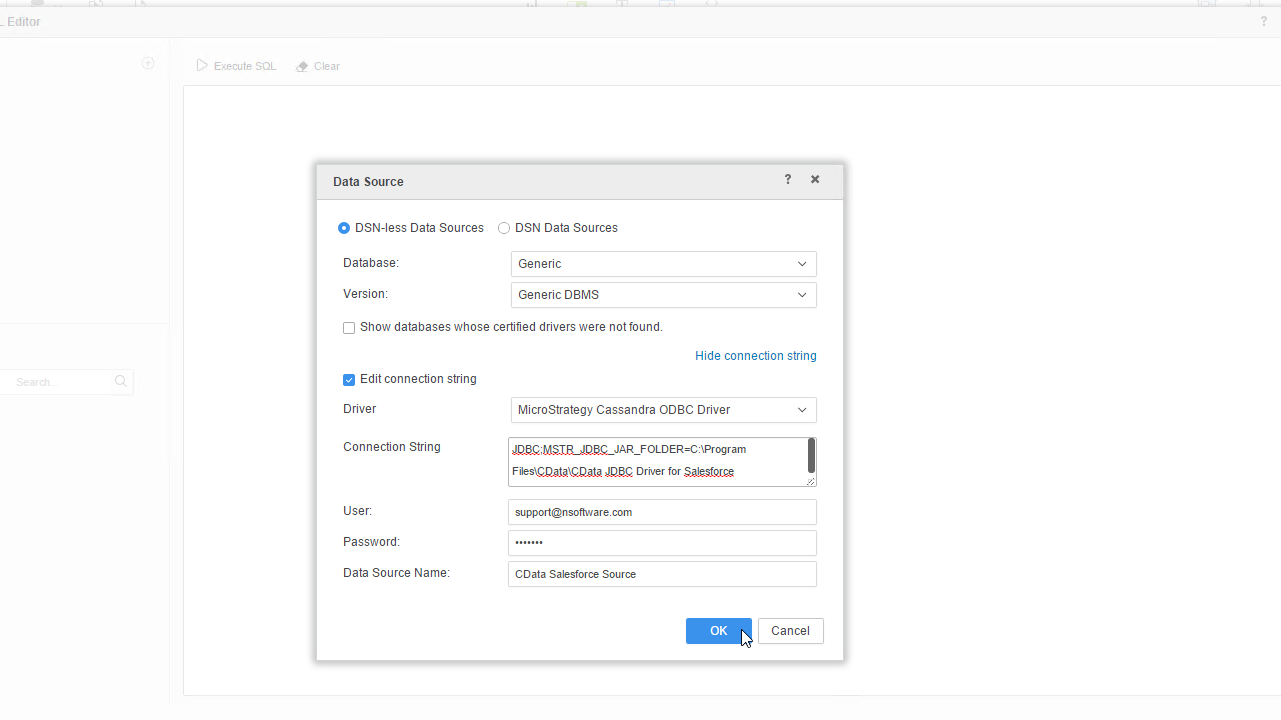

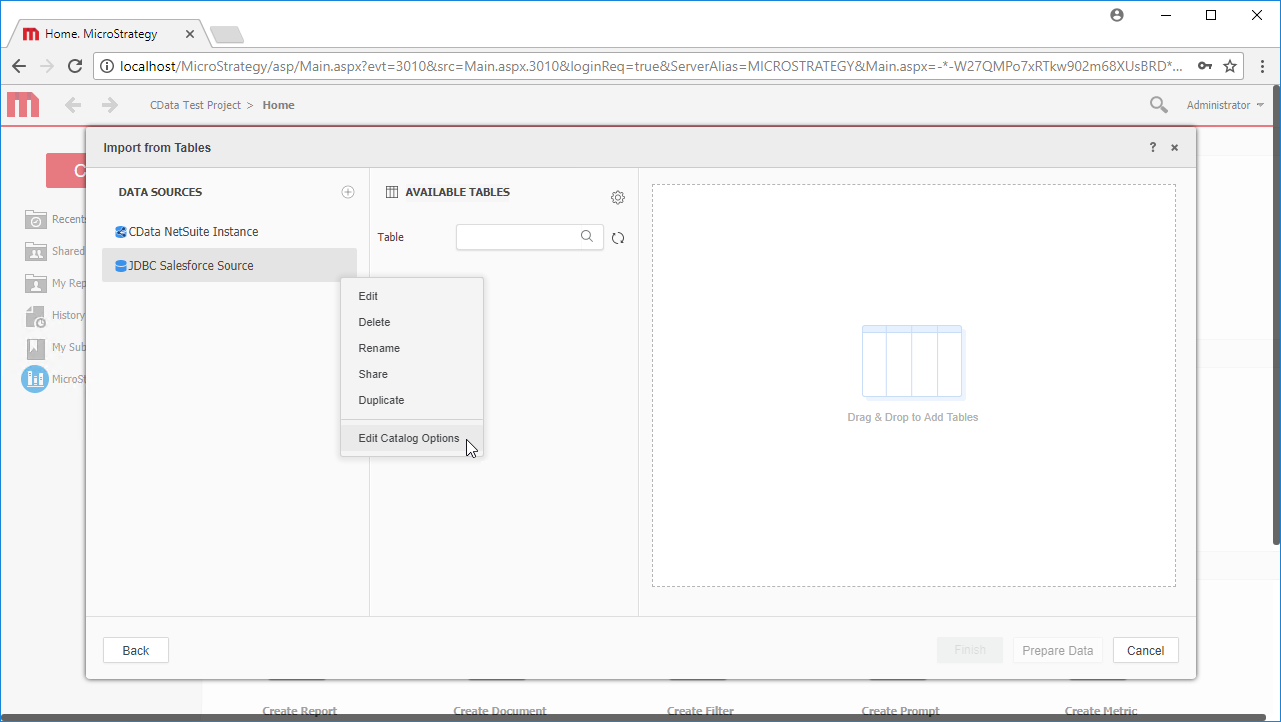
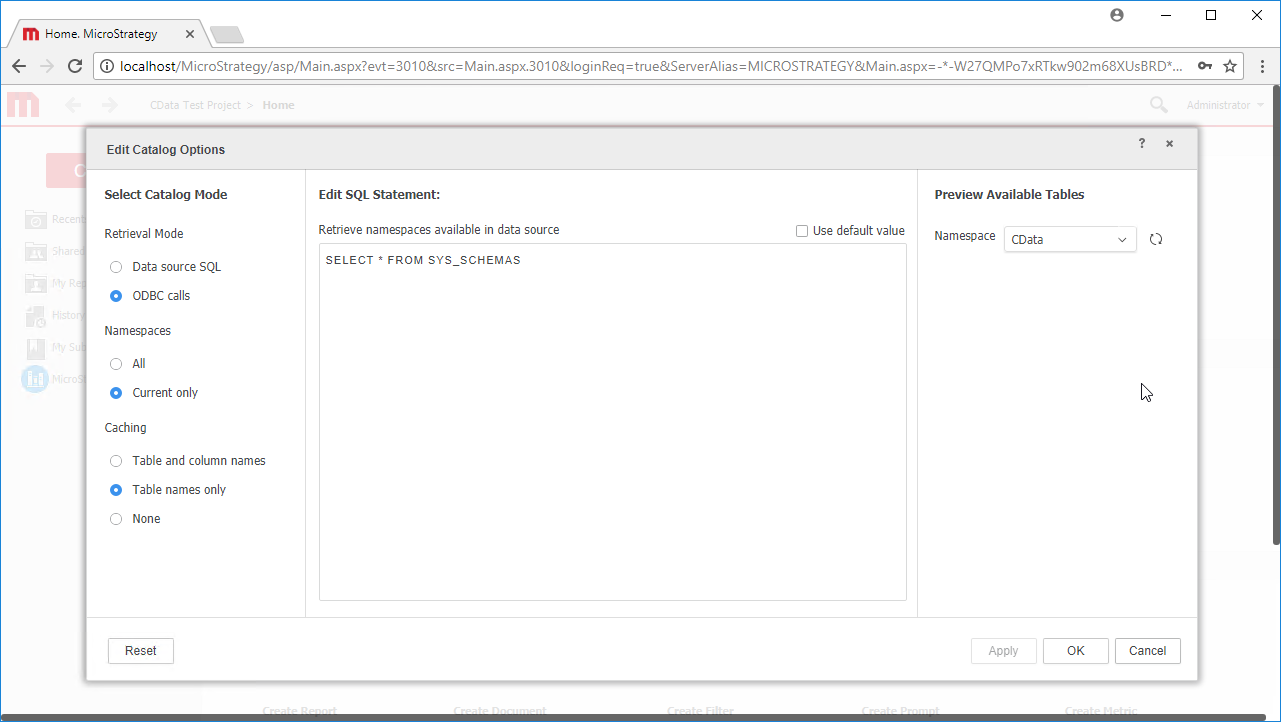
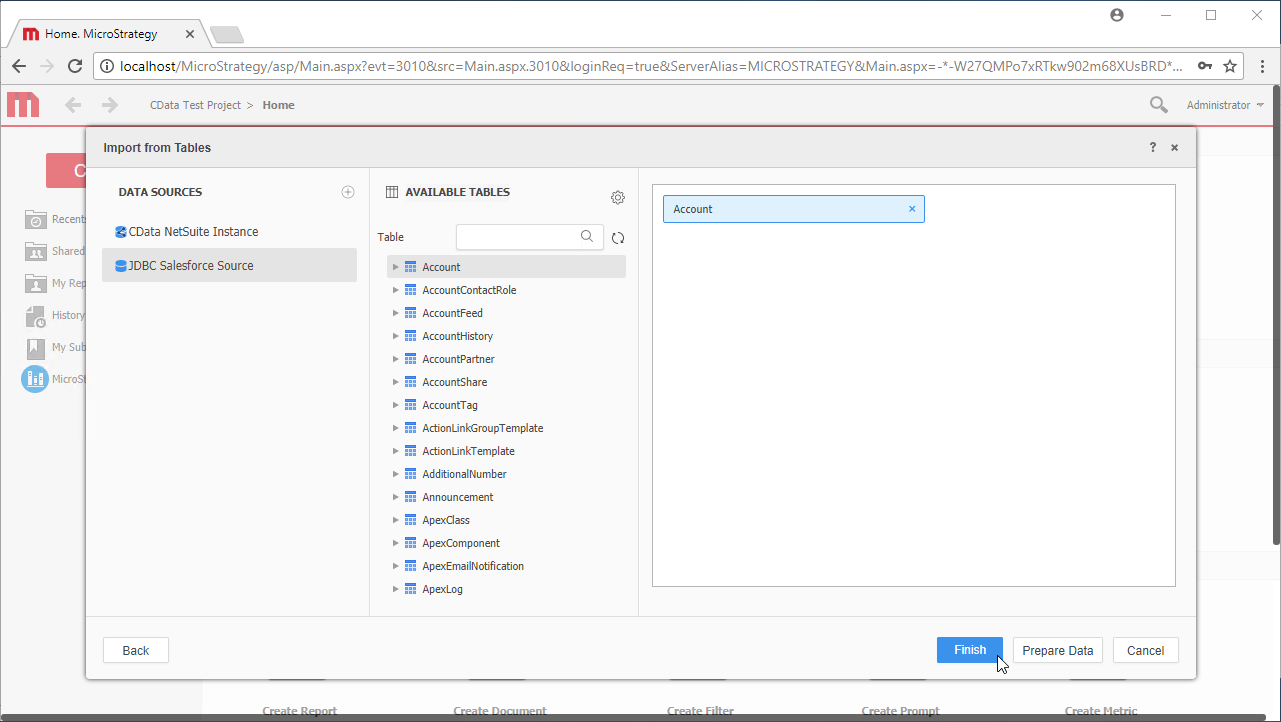 Note: Since we create a live connection, we can import whole tables and utilize the filtering and aggregation features native to the MicroStrategy products to customize our datasets.
Note: Since we create a live connection, we can import whole tables and utilize the filtering and aggregation features native to the MicroStrategy products to customize our datasets.